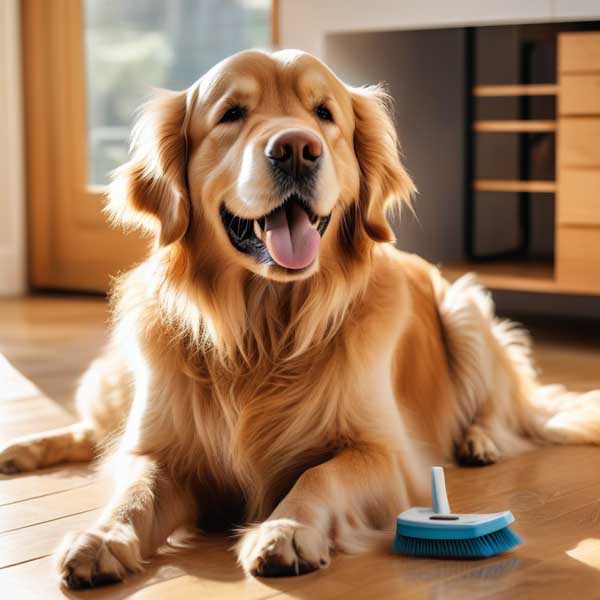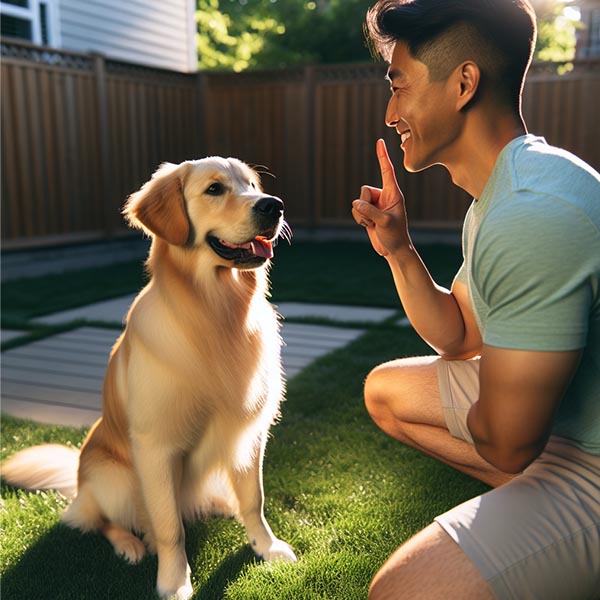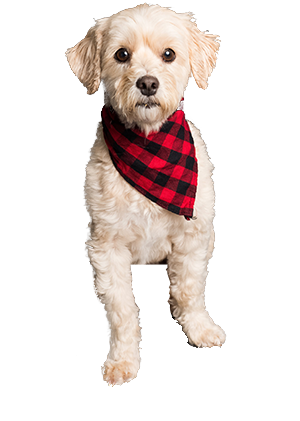
Table of Contents
ToggleHow Often Should You Groom Your Dog? Essential Tips for a Healthy Coat
Maintaining a regular brushing routine is essential for maintaining your dog’s skin and coat health. Moreover, routine professional grooming is important for the overall health and happiness of your dog. While some aspects of grooming can be done at home, others may require the expertise of a professional groomer.
Understanding Your Dog’s Grooming Needs
Recognizing your dog’s individual grooming requirements is the first step towards establishing a proper routine. Just as you wouldn’t use the same hair care products as your dog, their grooming needs differ based on various factors.
Consider your dog’s breed, coat type, lifestyle, and any specific health conditions they may have. For example, a long-haired dog will naturally require more frequent brushing than a short-haired breed.
The Importance of Grooming in Your Dog’s Health and Happiness
Grooming is essential for your pet’s health, extending far beyond aesthetics. It plays a vital role in maintaining their physical well-being and enhancing their overall happiness. Regular brushing helps distribute natural oils throughout your dog’s coat, promoting a healthy sheen and preventing mats and tangles.
Furthermore, it removes dirt, debris, and loose hair. Bathing helps remove dirt and keeps your dog smelling fresh, while also addressing any skin issues.
Beyond the physical benefits, grooming provides an excellent opportunity to strengthen the bond between you and your furry companion. A gentle massage during brushing can be incredibly relaxing for dogs, fostering trust and affection.
Factors Influencing Grooming Frequency: Breed, Lifestyle, and Health
A dog’s breed significantly influences its grooming needs. Breeds with double coats, such as Golden Retrievers or Huskies, have thick undercoats that require regular attention, especially during shedding seasons. These breeds benefit greatly from a thorough undercoat removal to prevent matting and keep their skin healthy.
Lifestyle also dictates grooming frequency. Dogs who spend a lot of time outdoors may require more frequent baths and brushings due to exposure to dirt and debris. Similarly, active dogs might need their nails trimmed more often than those who are less mobile.
Lastly, health conditions, especially those related to the skin, can impact grooming frequency. Always consult with your veterinarian if you notice any changes in your dog’s skin or coat or if they have any underlying health issues that may require adjustments to their grooming routine.
Essential Grooming Tools for Beginners
Having the right tools is essential for effective dog grooming at home. Basic tools include brushes, combs, nail clippers, shampoo, and conditioner. Selecting the appropriate tools depends on your dog’s specific coat type and size.
For instance, long-haired breeds generally require slicker brushes and combs with wider teeth, while short-haired dogs may only need a rubber curry brush or a bristle brush.
Brushes and Combs: Matching the Tool to Your Dog’s Coat
Investing in the right brushes and combs can make a world of difference in your dog’s grooming experience. Choosing the appropriate tool depends largely on their coat type:
- Short-haired breeds: Rubber curry brushes or bristle brushes are effective for removing loose hair and dirt.
- Long-haired breeds: Slicker brushes with fine, densely-packed bristles are ideal for removing tangles and mats, while combs with wider teeth can help with finishing touches and removing debris.
- Double-coated breeds: An undercoat rake is a must-have for removing loose undercoat during shedding seasons.
Daily brushing is recommended for dogs with longer or thicker coats, while weekly brushing may suffice for shorter coats. Remember, the goal is to keep your dog’s coat clean, mat-free, and healthy.
Clippers, Scissors, and Nail Trimmers: Safety and Comfort First
Using clippers, scissors, or nail trimmers on your dog can feel intimidating, but having the right tools and knowledge makes it safer. Opt for high-quality, sharp clippers designed for dog’s nails to prevent crushing or splitting. Scissors with rounded tips are safer for trimming hair around sensitive areas such as the face or paws.
Before using any sharp tools, get your dog accustomed to the sound and sensation. Reward calm behavior with treats and praise. If you’re uncomfortable trimming your dog’s nails yourself, consult your veterinarian or a professional groomer for assistance.
Remember, safety and comfort should be your priority when using any of these tools on your pet. With patience, practice, and the right tools, you can make grooming a more positive experience for both you and your furry friend.
Step-by-Step Guide to Basic Dog Grooming at Home
If you’re up for the task, there are several grooming steps you can handle at home. Of course, professional grooming is always an option, but knowing the basics can help you maintain your dog’s hygiene between appointments.
Let’s break down the process into four manageable stages: preparing your dog and the area, brushing, bath time, and finally, nail trimming and ear cleaning.
Step 1: Preparing Your Dog and the Grooming Area
Before you even think about giving your furry friend a DIY grooming salon experience at home, take these steps:
- Choose a comfortable and safe space: It could be a bathroom with a non-slip mat in the tub for bath time, or a well-lit area with a table for brushing and trimming.
- Gather your tools: Have everything within arm’s reach to avoid leaving your dog unattended with sharp objects.
- Introduce the tools gradually: Let your dog sniff and investigate the brushes, combs, clippers, and other tools. Reward calmness to create positive associations.
By creating a positive and low-stress environment, you make grooming less intimidating for your dog, and for you!
Step 2: Brushing Techniques for Different Coat Types
Different coat types have different needs. For instance, silky hair requires gentle brushing to prevent breakage, while short hair benefits from a firm bristle brush. Here’s a basic guide:
- Short-haired dogs: A rubber curry brush or a bristle brush does the trick for removing dead hair and distributing skin oils.
- Long-haired dogs: Use a slicker brush to gently work through tangles, starting from the ends and moving towards the roots. A wide-toothed comb can help with finishing touches.
- Double-coated dogs: An undercoat rake is essential for removing loose fur, especially during shedding seasons.
Adjust your brushing technique based on your dog’s specific coat, and always be gentle to avoid causing any discomfort.
Step 3: Bath Time Essentials—Making it a Positive Experience
Bath time doesn’t have to be a stressful event for you or your dog. The key is to make it a positive experience:
- Use lukewarm water: Test the water temperature on your wrist before bathing your dog, ensuring it’s comfortably warm.
- Choose a dog-specific shampoo and conditioner: Human products can disrupt the pH balance of your dog’s skin, leading to dryness or irritation.
- Rinse thoroughly: Leftover shampoo can irritate your dog’s skin, so ensure you’ve rinsed out all the product.
After the bath, towel-dry your dog’s fur as much as possible, or use a hairdryer on a low, cool setting if they tolerate it.
Step 4: Nail Trimming and Ear Cleaning Best Practices
Proper nail and ear care can prevent discomfort and infections. Here’s a table outlining the best practices for these essential grooming tasks:
| Task | Tool | How Often | Tips |
|---|---|---|---|
| Nail Trimming | Dog nail clippers | Every 2-4 weeks | Trim only the tips to avoid the quick (the pink part with blood vessels). If unsure, ask a vet or groomer for guidance. |
| Ear Cleaning | Dog ear cleaning solution, cotton ball or gauze | Every 1-2 weeks or as needed | Apply the cleaning solution to a cotton ball or gauze, gently wipe the visible parts of the ear. Never insert anything deep into the ear canal. |
Conclusion
Grooming is vital for your dog’s health and happiness. Knowing their grooming needs and using the right tools makes a big difference. Whether you’re brushing, bathing, or trimming nails, regular grooming keeps your dog comfortable and healthy. With a little practice and patience, you can make grooming a positive experience for both you and your dog.
Frequently Asked Questions
How often should I groom my short-haired dog versus a long-haired dog?
Short coats often require regular brushing at least weekly, while long hair necessitates more frequent, even daily, grooming. Ultimately, grooming frequency depends on your dog’s individual coat type and lifestyle.
Can regular grooming improve my dog’s health?
Absolutely! Regular grooming promotes healthy skin and coat, helps prevent infections, and provides opportunities to spot problems like parasites, skin irritations, or even early signs of gum disease, altogether contributing to your pet’s health and well-being.




